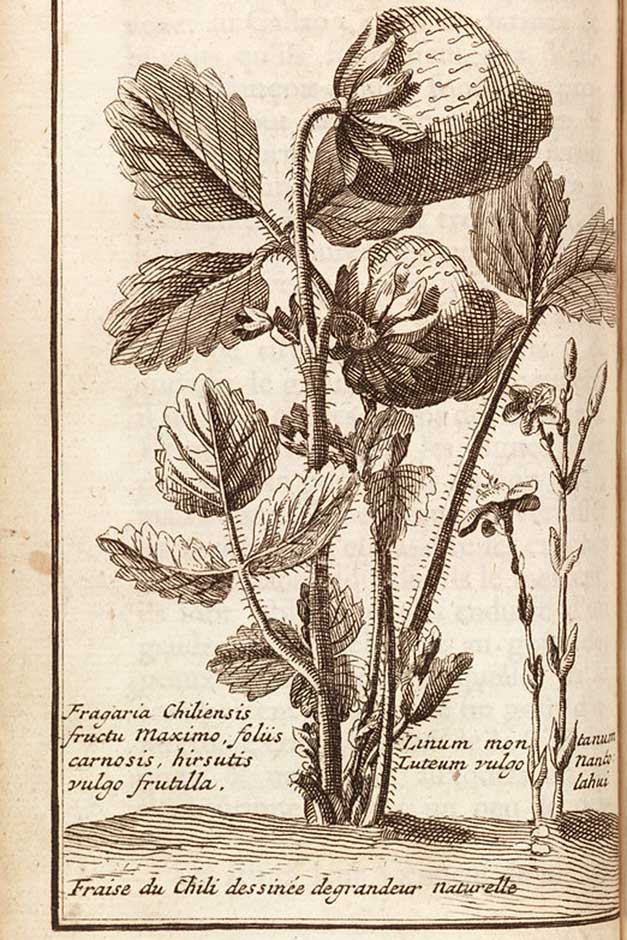You might think that strawberries are as English as clotted cream and Wimbledon, but you'd be mistaken, says Fiona Davison,
Head of Libraries and Exhibitions

It is hard to believe now, but strawberries as we know them are a relatively modern horticultural development, the result of crosses between far-flung species from Europe and both North and South America.
Small native woodland strawberries have been grown in Britain for centuries, transplanted from the wild to our gardens from the Middle Ages onwards. Virginia strawberries (
Fragaria virginiana) were brought to England from America during the 16th century.
These were sweeter than our wild varieties but were still small, and strawberries were a seasonal garden treat rather than a commercially viable crop. This only began to change in the mid 18th century after a French spy named Frézier was sent to Chile in 1712 to report back on fortifications near Concepción.
New species from the New World

'Fragaria Chiliensis fructo Maximo’ from Frézier's 1717 book about his South American journey
© RHS Lindley Library
In between noting the position of gun placements and moats, he spotted a large-fruited strawberry plant and, remarkably, had the presence of mind to collect specimens and bring them back to France. This was
Fragaria chiloensis. The fruit was large but, unfortunately, tasteless. However, by the 1820s crosses had been made between the woodland strawberry (
Fragaria vesca) and the Chilean strawberry.
English growers were the most enthusiastic breeders of strawberries, and the early years of the 19th century saw a proliferation of crosses. What was needed was a reliable system of classifying and comparing these new competing varieties, to identify the best ones to grow for different purposes and conditions.

'Fragaria (strawberry) sorts' drawn and engraved by Crispijn de Passe the Younger, 1614
© RHS Lindley Library
In 1822 the Horticultural Society of London (as the RHS was then known) sent out printed forms to ‘all who are known to be attentive cultivators of strawberries’, asking them to list all the varieties they grew. A total of 70 forms were received, and more than 400 parcels of plants were sent for and planted at the Society’s experimental garden at Chiswick.
A young Scottish gardener named James Barnet took over this collection and was tasked with the job of checking for synonyms (where two differently named plants were actually the same variety) and making considered judgements on their different qualities, as a guide for future cultivation and breeding programmes.
Growers wishing to develop strawberry crops now had a reliable source of reference to guide them. Throughout the nineteenth century larger, more reliable and heavier-cropping strawberries were developed and it is the descendants of these varieties that we eat today.
The Society’s interest in supporting the nation’s gardeners to develop new varieties and perfect the growing of strawberries can also be seen in a set of beautiful paintings it commissioned from the botanical artist William Hooker from 1814-1821. The paintings were intended to assist with the identification and naming of a wide variety of fruit, but strawberries do feature strongly and are among the most appealing of the artworks.
Unfortunately poor Mr Hooker seems to have had some sort of mental collapse and although the Society noted that he was ‘quite sane’ in December 1822, by the following summer he was ‘confined’ and his personal possessions, including a large store of prints and paintings were sold off. Many of the varieties recorded in the Society’s library and art collections are no longer in cultivation, so we can only wonder what summer delights we are missing out on.

